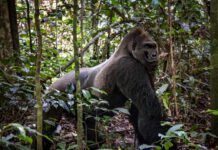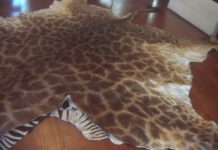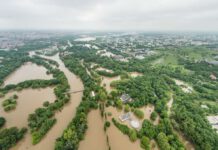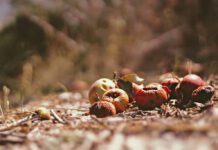
The wilds of mainland Australia are experiencing a special kind of baby boom—one that hasn't happened there in more than 3,000 years. Aussie Ark, in partnership with Re:wild and WildArk, are celebrating the birth of seven Tasmanian devil joeys born to adults released last year into a 400-hectare (1,000 acres) wild sanctuary for the first time ever.
“We have been working tirelessly for the better part of 10 years to return devils to the wild of mainland Australia with the hope that they would establish a sustainable population,” said Tim Faulkner, president of Aussie Ark. “Once they were back in the wild, it was up to them, which was nerve wracking. We had been watching them from afar until it was time to step in and confirm the birth of our first wild joeys. And what a moment it was!”
Of the 26 adult Tasmanian devils released in 2020, seven were reproductive females. Initial pouch checks showed that the joeys appear to be in great health and developing normally. Aussie Ark rangers will continue to monitor the mother devils through camera traps and will conduct follow-up pouch checks in the coming weeks. Aussie Ark estimates that 20 Tasmanian devil joeys will be born in the wild this year.
Tasmanian devils vanished entirely from mainland Australia in large part because they were outcompeted by introduced dingoes, which hunt in packs. Dingoes never made it to Tasmania, but across the island state, a transmissible, painful and fatal disease called Devil Facial Tumor Disease (DFTD)—the only known contagious cancer—decimated up to 90 percent of the wild population of Tasmanian devils. Just 25,000 devils are left in the wild of Tasmania today.
For the last decade, the Aussie Ark team has been building an insurance population of Tasmanian devils and learning everything they can about the animals, including about their reproductive physiology, behavior, and ecological needs, all leading up to the 2020 reintroduction.
“The fact that the adults have adapted so quickly is remarkable and the joeys are one of the most tangible signs that the reintroduction of Tasmanian devils is working,” said Don Church, president of Re:wild. “This doesn't just bode well for this endangered species, but also for the many other endangered species that can be saved if we rewild Australia, the country with the world's worst extinction rate. Tasmanian devils are ecosystem engineers that can restore and rebalance the wild to the benefit of other native wildlife, to the climate, and to people.”
As native apex predators and the world's largest carnivorous marsupials, Tasmanian devils help control feral cats and foxes that threaten other endangered and endemic species. And because they are scavengers, they help keep their home clean and free of disease.
Aussie Ark selected the 26 devils for reintroduction based on those most suitable to breed with one another without any inbreeding. The wild sanctuary prevents the spread of disease, feral pests, noxious weeds and fire, which was catastrophic last year for the country. The wild sanctuary also keeps cars out, ensuring that the devils learn not to associate cars with food—an association that could be deadly when they are more widely released.
read more www.rewild.org/press/first-tasmanian-devil-joeys-born-on-mainland-australia…










